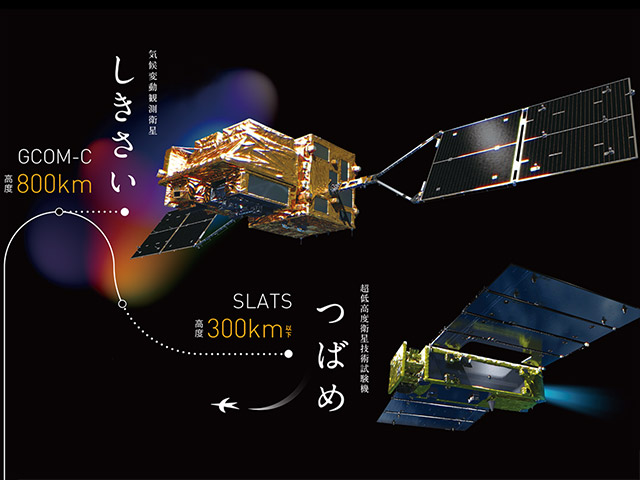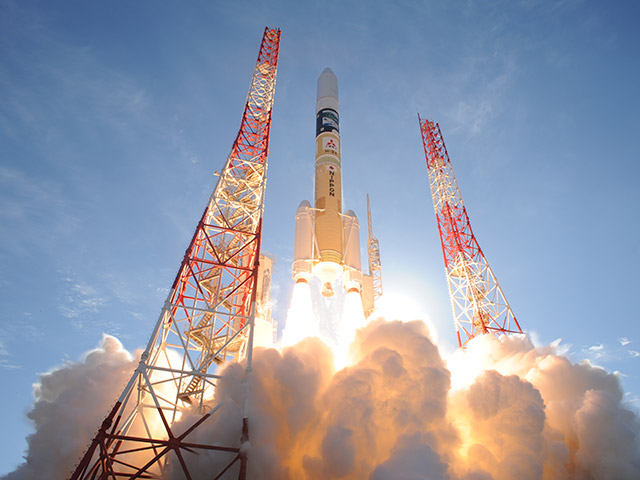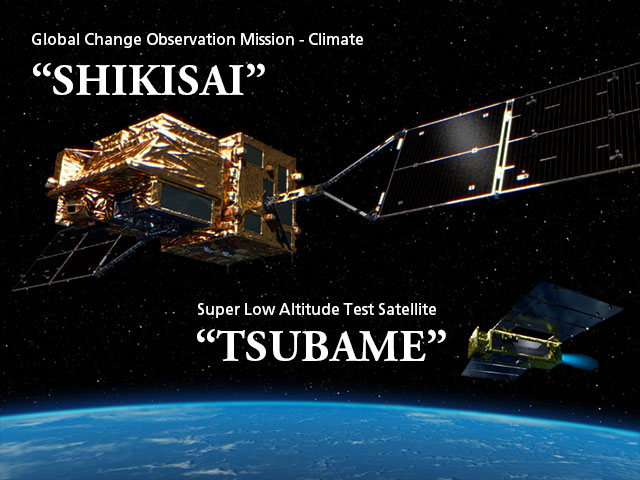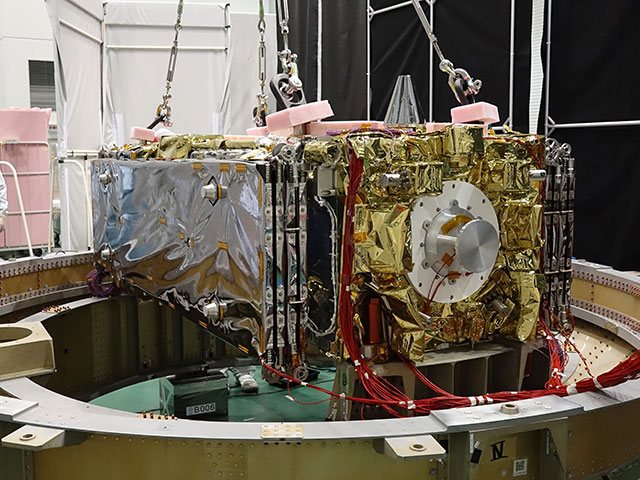Topics List
Dec. 24, 2017 Updated
SHIKISAI and TSUBAME critical operation phase successfully completed! Initial function verification starts!
|
JAXA received telemetry data from SHIKISAI and TSUBAME, confirming that their satellite attitude control system had transitioned to the steady state. Current status of both satellites is stable. |

|
|---|
Dec. 23, 2017 Updated
Successful Launch, H-IIA Launch Vehicle No. 37 Encapsulating SHIKISAI and TSUBAME
|
The H-IIA Launch Vehicle No. 37 with the Global Change Observation Mission - Climate "SHIKISAI" (GCOM-C) and the Super Low Altitude Test Satellite "TSUBAME" (SLATS) onboard lifted off at 10:26:22 a.m. on December 23, 2017 (Japan Standard Time) from the Tanegashima Space Center. |

|
|---|
Oct. 27, 2017 Updated
H-IIA F37 with SHIKISAI/TSUBAME onboard to be launched on December 23
|
The launch schedule of the H-IIA Launch Vehicle No. 37 (H-IIA F37) has been decided to be between 10:26:22 thru 10:48:22 a.m. on December 23 (Sat), 2017 (Japan Standard time). The launch will be performed by Mitsubishi Heavy Industries and JAXA. |

|
|---|
Jul. 14, 2017 Updated
SLATS renamed TSUBAME
|
JAXA launched a month-long campaign to have the public suggest a new name of the SLATS, acronym for the Super Low Altitude Test Satellite. The SLATS renaming campaign, coupled with GCOM-C’s, was responded by 12,895 applications. |

|
|---|
Jun. 2, 2017 Updated
SLATS Comes through Shock and Vibration Testing
|
SLATS, JAXA’s super low altitude test satellite has successfully completed shock (April 11, 2017) and vibration (April 25 through May 12, 2017) testing, a set of ground testing configured to simulate impact and vibration induced by launch and the following separation of the payload fairing.
SLATS, like all other spacecraft, is exposed to extreme conditions to prove the integrity of its control systems.
|

|
|---|